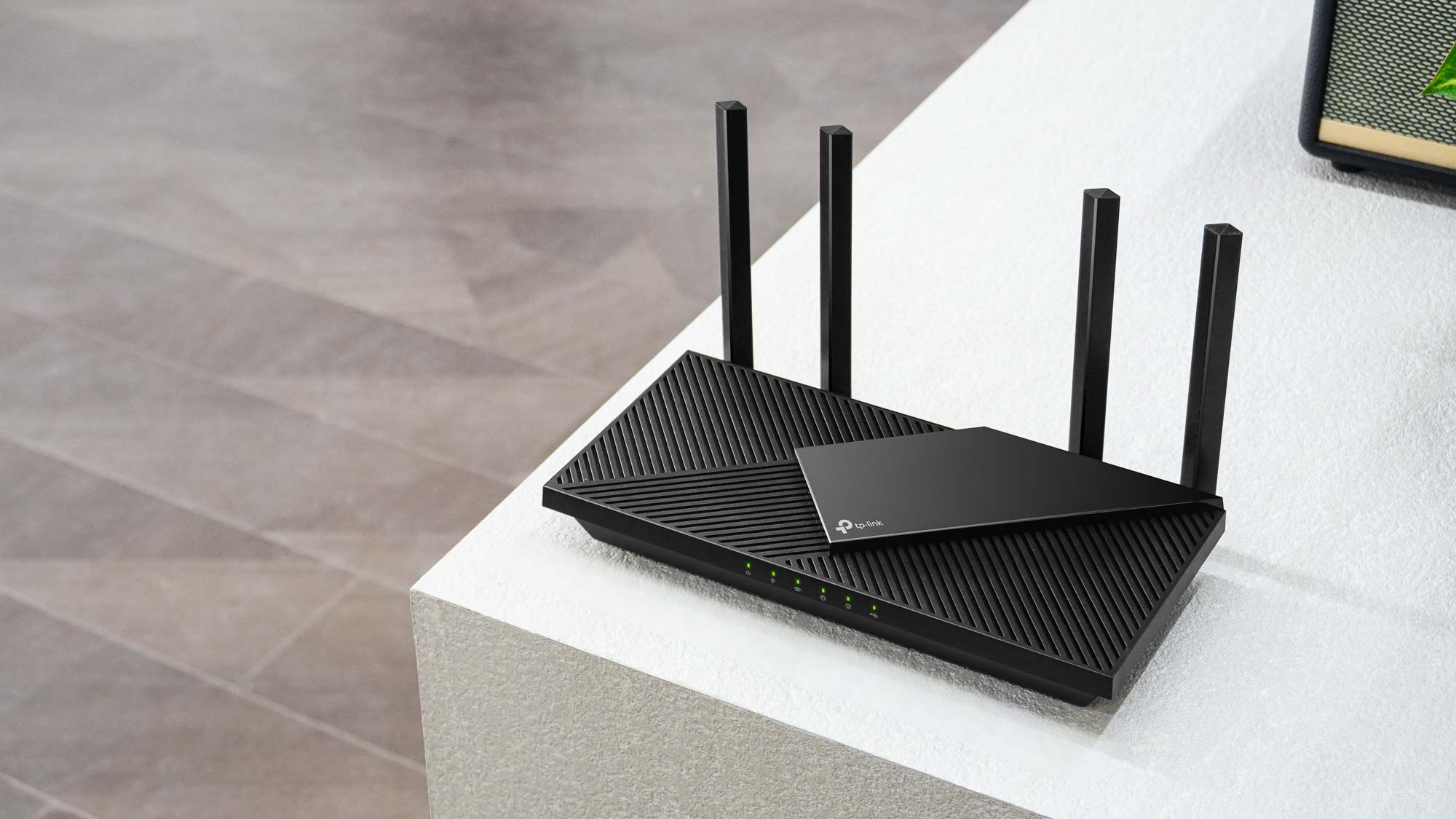
Wi-Fi Spec: AX3000 (802.11AX)
Antennas (removable): 4/No
Ports: 1 WAN/4 LAN gigabit per second
Processor/Memory/Storage: 1GHz dual-core/128MB/512MB
Wi-Fi chip: Qualcomm IPQ5018
Peak 802.11AX Performance: 823.7Mbps (at 15 feet)
Range: 110 feet
Size: 10.2 x 5.3 x 1.5 inches
Est. Annual Electricity Cost: $11.04
One of the cheapest Wi-Fi 6 routers you can get, the $110 TP-Link Archer AX55 is also one of the smallest on the market, allowing it to hide in plain sight and still distribute wireless internet throughout a mid-sized home. Based on its dual-band architecture, it can move a lot of data for the money but during testing, it unfortunately fell short of the mark at mid-range distances.
It comes with a two-year warranty and a mix of customization options that other routers can only dream of. For those shopping for the move to Wi-Fi 6, the Archer AX55 is a bargain for penny-pinchers. Our TP-Link Archer AX55 review will help you decide if this is the best Wi-Fi 6 router for you or if you’re better off spending a bit more for better mid-range performance.
TP-Link Archer AX55 Review: Pricing and Availability
Priced as low as $110, TP-Link is equal parts economy and performance in the first Wi-Fi 6 router that’s as easy on the wallet as it is at distributing high-speed wireless data. It’s priced on par with the Reyee RG-E5, but smaller, with more options and a cornucopia of configuration choices that others ignore.
TP-Link Archer AX55 Review: Design
Call it the lilliputian of Wi-Fi routers, the TP-Link Archer AX55 measures just 10.2 x 5.3 x 1.5 inches. Clothed in basic black, its only adornment is a raised central triangular design element on top. Not much bigger than a hardbound book, it’s roughly 50% smaller than the Reyee RG-E5.
The four amplified antennas can’t be replaced but can be rotated and swiveled. Swinging them up adds 5 inches to the router’s height. Still, the Archer AX55 is small enough to be able to hide in plain sight on a bookshelf, kitchen counter or desktop.
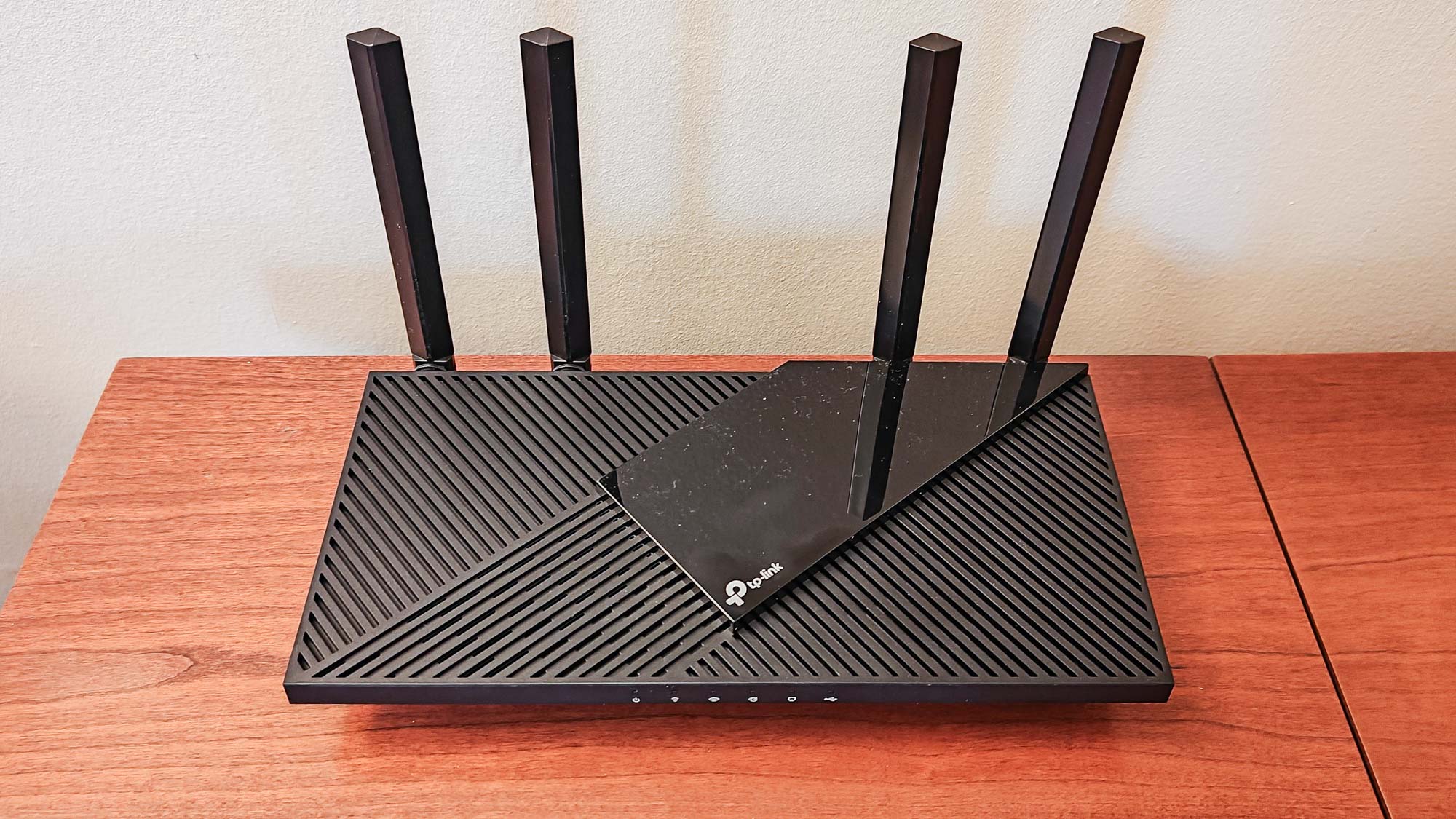
Thoughtfully designed, it has soft rubber feet so it won’t scratch your furniture and the Archer AX55 has cutouts underneath for hanging it on a wall. The AX55’s vents on top kept its cool even when the system is working overtime. It never broke 95 degrees even when moving loads of data back and forth.
Inside it has Qualcomm’s popular IPQ5018 Wi-Fi chipset which creates a dual-band wireless Wi-Fi 6 network. A 1GHz dual-core processor controls the action along with 512MB of RAM and 128MB of flash storage for the router’s firmware and settings. With the ability to handle four independent data streams it’s capable of delivering upwards of 574Mbps over its 2.4GHz band as well as 2,402 Gbps over the 5GHz band. On the downside, the Archer AX55 can’t use the high-performance 6GHz band that Wi-Fi 6E and Wi-Fi 7 devices have available to boost overall throughput. It carries a modest AX3000 Wi-Fi throughput rating, slightly lower than the RG-5E’s AX3200 rating.
The Archer AX55 uses all Wi-Fi 6 has to offer. This includes MUMIMO technology for servicing up to 256 devices at a time, beamforming for customizing each transmission to its recipient and Orthogonal Frequency Division Multiple Access (OFDMA) technology for moving data to and from several clients at once. It has a surprisingly up to date assortment of ports, including a USB 3.0 connector for distributing the contents of a data drive across the network; it’s rated at 5Gbps. This is something that the Reyee RG-E5 lacks.
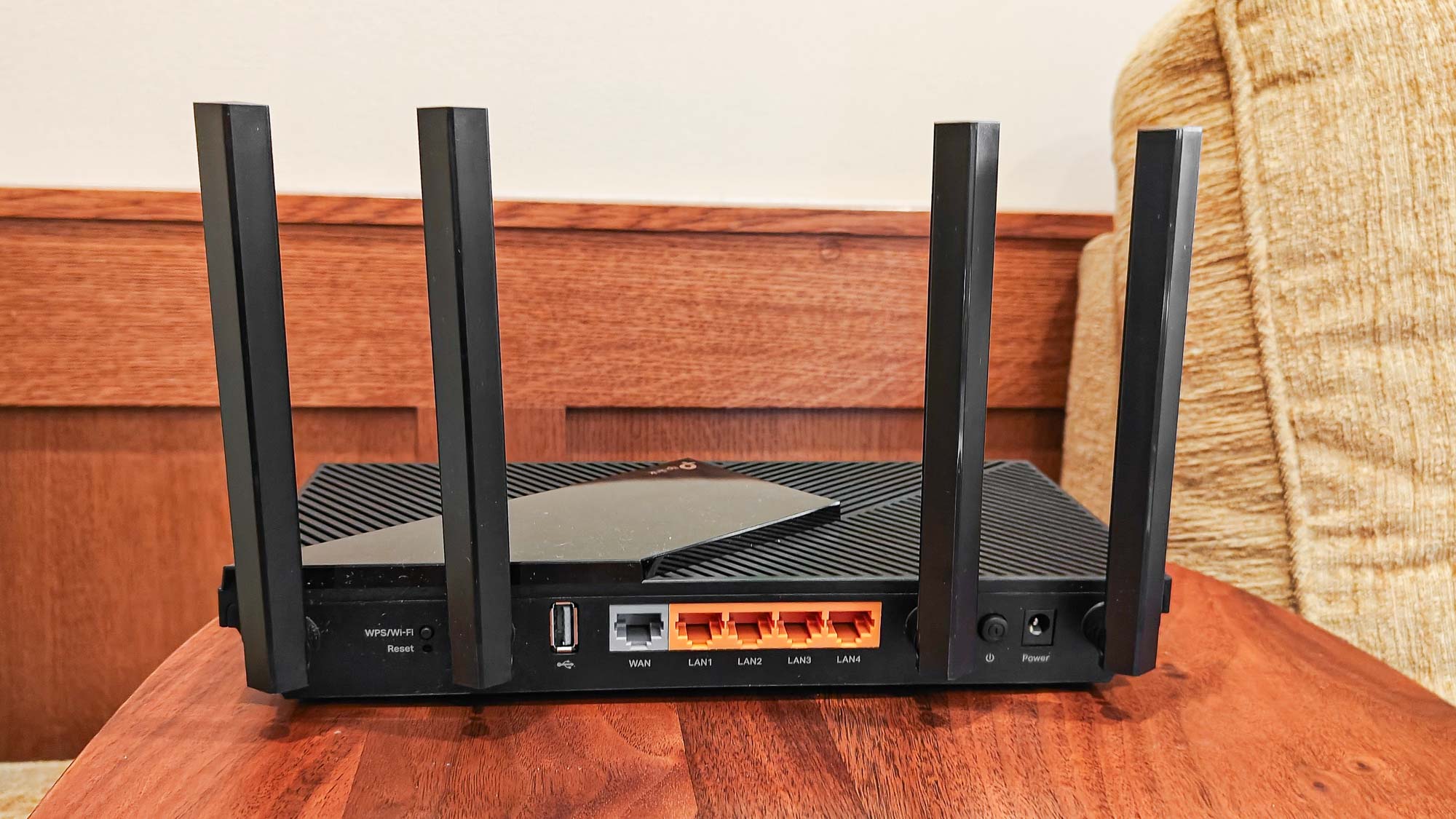
It ignores the latest Multi-Gig trends with a 1Gbps input WAN port that should be more than enough for this class of router. There are four downstream 1Gbps ports for a variety of networking appliances, and none of these ports can be aggregated for top speed.
In addition to a WPS key for quickly adding devices, the back panel also has a recessed reset switch and an on/off button. The front has six LEDs that include ones for power, the two operational bands, an active Internet connection, Ethernet data movement as well as if a USB device is connected. The lights can be controlled in the system’s software and scheduled to go on and off.
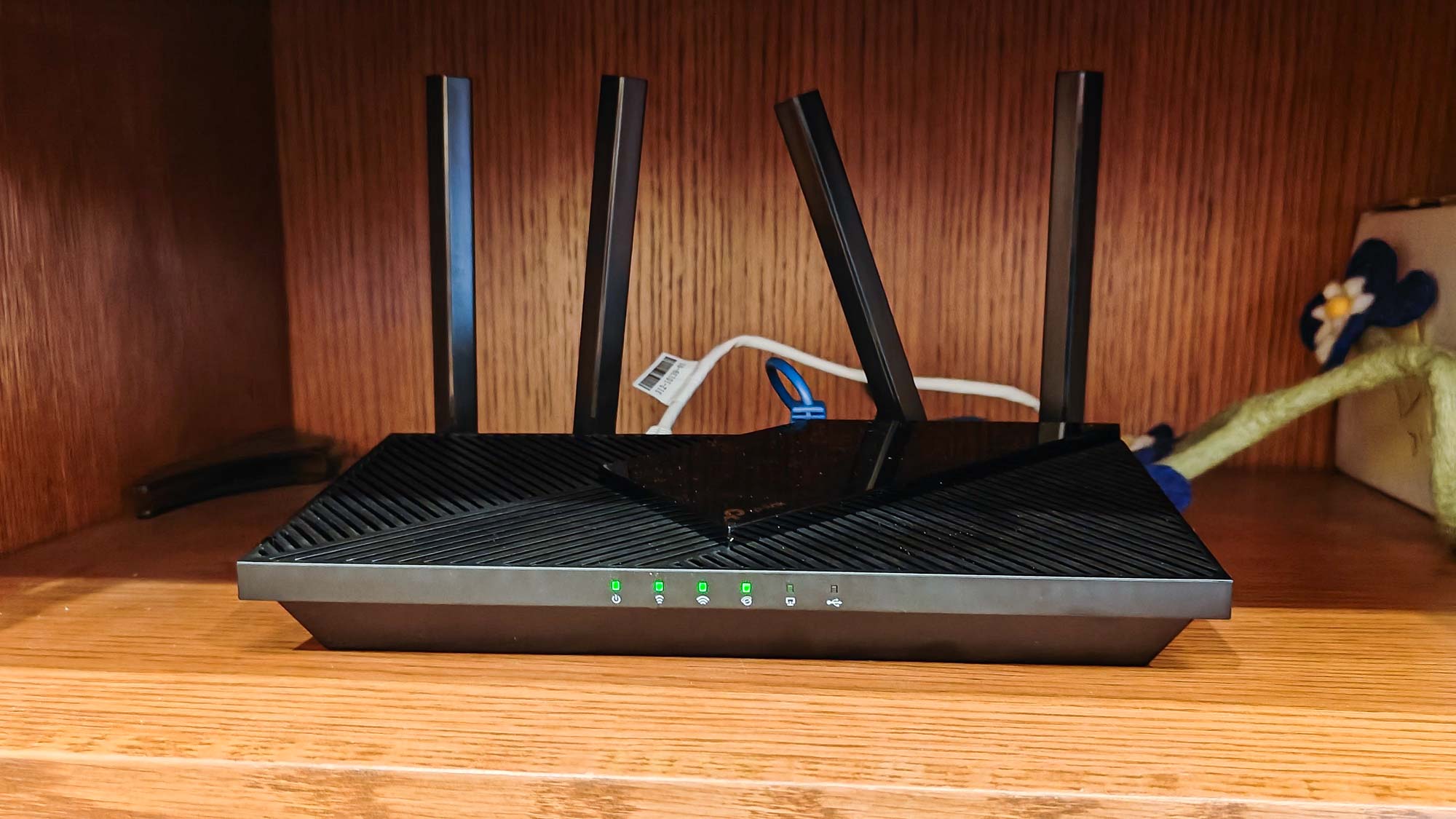
The Archer AX55 does lack Reyee’s one button mesh networking. It can be used with other TP-Link gear to create an EasyMesh LAN or operate as a generic access point though; it just requires a few setup steps to activate.
Finally, the AX55 has security under control, with the ability to run either as a VPN client or VPN server for online anonymity. It comes with TP-Link’s HomeShield software built into the router to stop malware, cyberattacks as well as guarding IoT devices that are often ignored by the security software included with other routers. The basic protection is free but the Security+ subscription adds SafeSearch, the ability to restrict YouTube video viewing and limit the use of devices by children.
That said, HomeShield is a router only approach, while Netgear’s Armor melds router defenses with antivirus software from Bitdefender. HomeShield Security+ costs $55 a year; Netgear Armor costs twice that.
TP-Link Archer AX55 Review: Performance
Using the networking benchmark tests from Keysight IxChariot and a Samsung Galaxy Book notebook, the TP-Link Archer AX55 proved itself to be a reliable and competent router. Able to satisfy all but the biggest data hogs at home, it can’t touch the stratospheric gigabit per second speeds of a Wi-Fi 7 device but tests in my 100 year old home were impressive nonetheless based on the router’s inexpensive price.
With the Archer AX55 router and the test system separated by 15 feet, the network delivered 823.7Mbps, just a hair short of the Reye RG-E5’s 849.2Mbps throughput, but something few will be able to discern. Both beat out the more expensive Linksys MR9000 which pushed 822.0Mbps at this distance. That said, all three were put to shame by the TP-Link Archer AX6000 with 884.4Mbps of throughput.
At 50-feet, the Archer AX55 network moved upwards of 288.4Mbps, 17% more data than the 240.1Mbps that the RG-E5 was capable of. Both were well off the pace set by the Archer AX6000’s 396.4Mbps, which delivered a quarter more bandwidth than the Archer X55 or RG-E5 routers.
While other Wi-Fi 6 routers often get a second wind at 75 feet, the Archer AX55 started to lag and fell to the back of the class. Its throughput dropped to 89.6Mbps, one-third of the RG-5E’s 298.0Mbps and much lower than the 227.0Mbps and 149.9Mbps that the Linksys MR9000 and Archer AX6000 achieved.
Both the Archer AX6000 and MR9000 were offline at 90-feet, the test’s terminal distance. By contrast, the Archer AX55 still had some ways to go with 15.0Mbps available at the test system. It’s less than one-third the throughput that the RG-E5 yielded at that distance but still enough for email and maybe a movie. The Archer AX55 had a range of 110 feet, surpassing the RG-E5’s 100 foot range.
When we set the test system up in an adjacent room that’s 25 feet and a wall away from the router, it was able to deliver 697.1Mbps of bandwidth. That’s nearly 20% off the pace set by the RG-E5 under the same conditions.
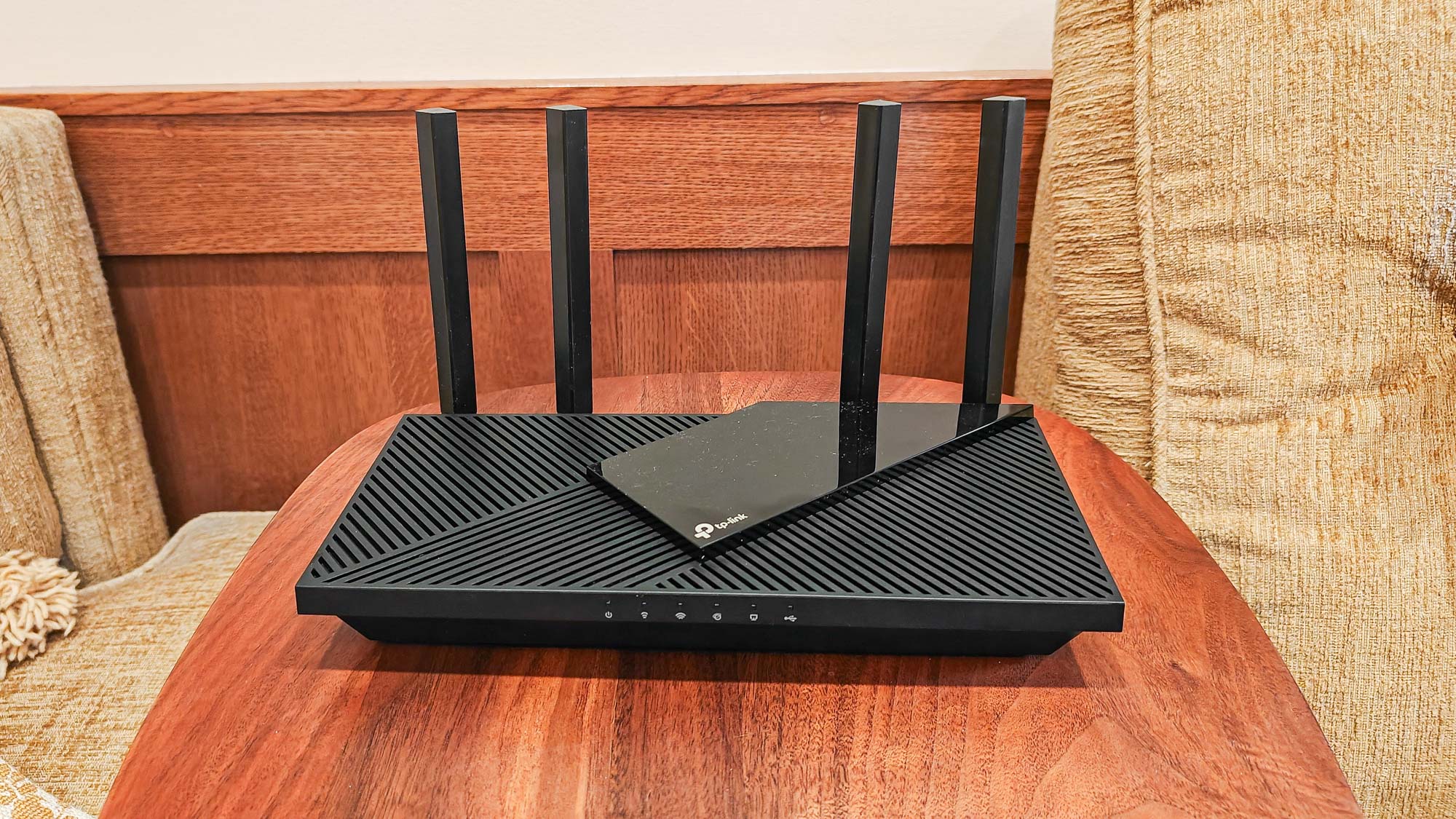
Still, the AX55 easily passed our data saturation test. While we streamed 4K videos to an iPad Pro and played the BBC World Service news feed to a ThinkPad T470, we viewed YouTube videos on a MacBook Air while a Samsung Galaxy Book moved data onto and off of a network RAID server. Everything came through loud and clear without any freeze ups, glitches or anomalies.
As it moved data packets back and forth, the Archer AX55 used only 8.4 watts, making it the power miser of the router world. There’s no power conservation techniques used, and if it’s left on 24/7, the X55 should cost about $11 a year to operate if you pay the national average of 15 cents per kilowatt hour of electricity. Others, like the RG-E5 use significantly more power.
TP-Link Archer AX55 Review: Setup
Installing and configuring the Archer AX55 was a snap, taking all of 10 minutes and 30 seconds, start to finish. I chose to use the Tether app (available for Android and iOS) but could just as easily have used a connected browser and the router’s internal interface. I started by creating an account that required proving my existence with an activation email.
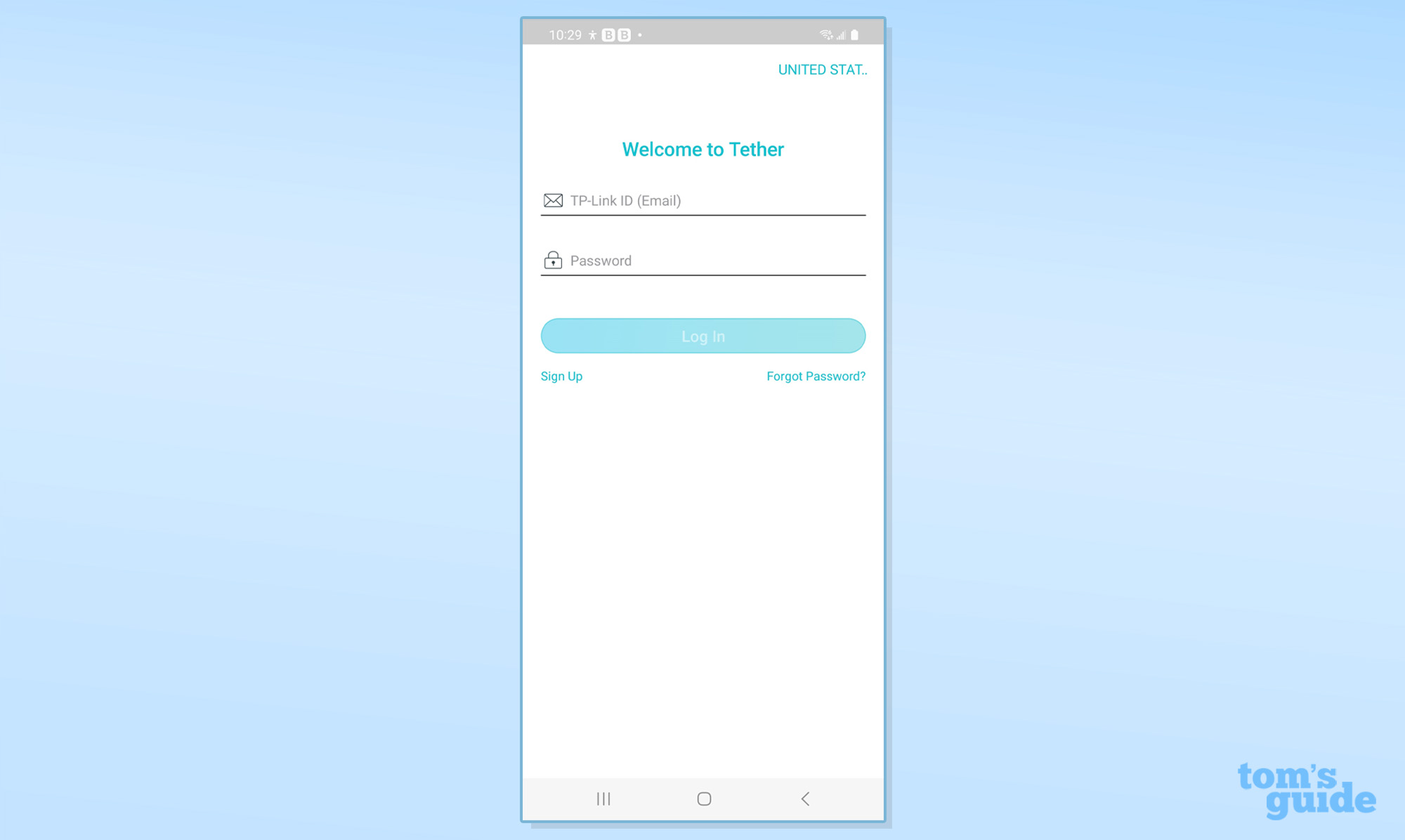
Next up, I set my Samsung Galaxy S20 phone up to connect with the router’s default LAN; the SSID and passcode details are printed underneath. This was followed by picking “Router” from a list of on-screen illustrations.
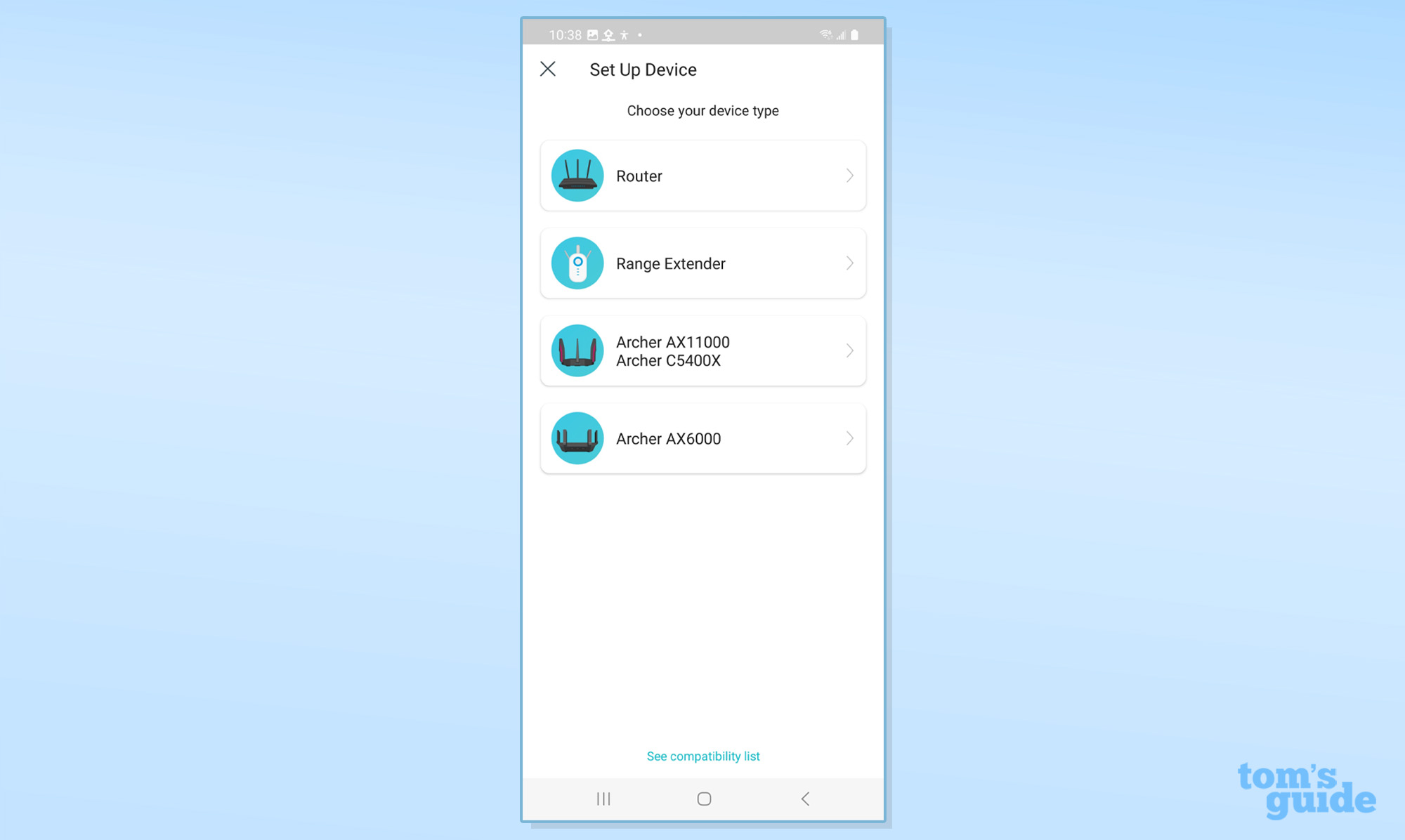
Then, I plugged everything in and waited for four of the router’s LEDs to glow green. At that point, the app quickly found the Archer AX55 and showed me its MAC address. I needed to follow this up by setting up an administrative password as well as a new network name and login credentials.
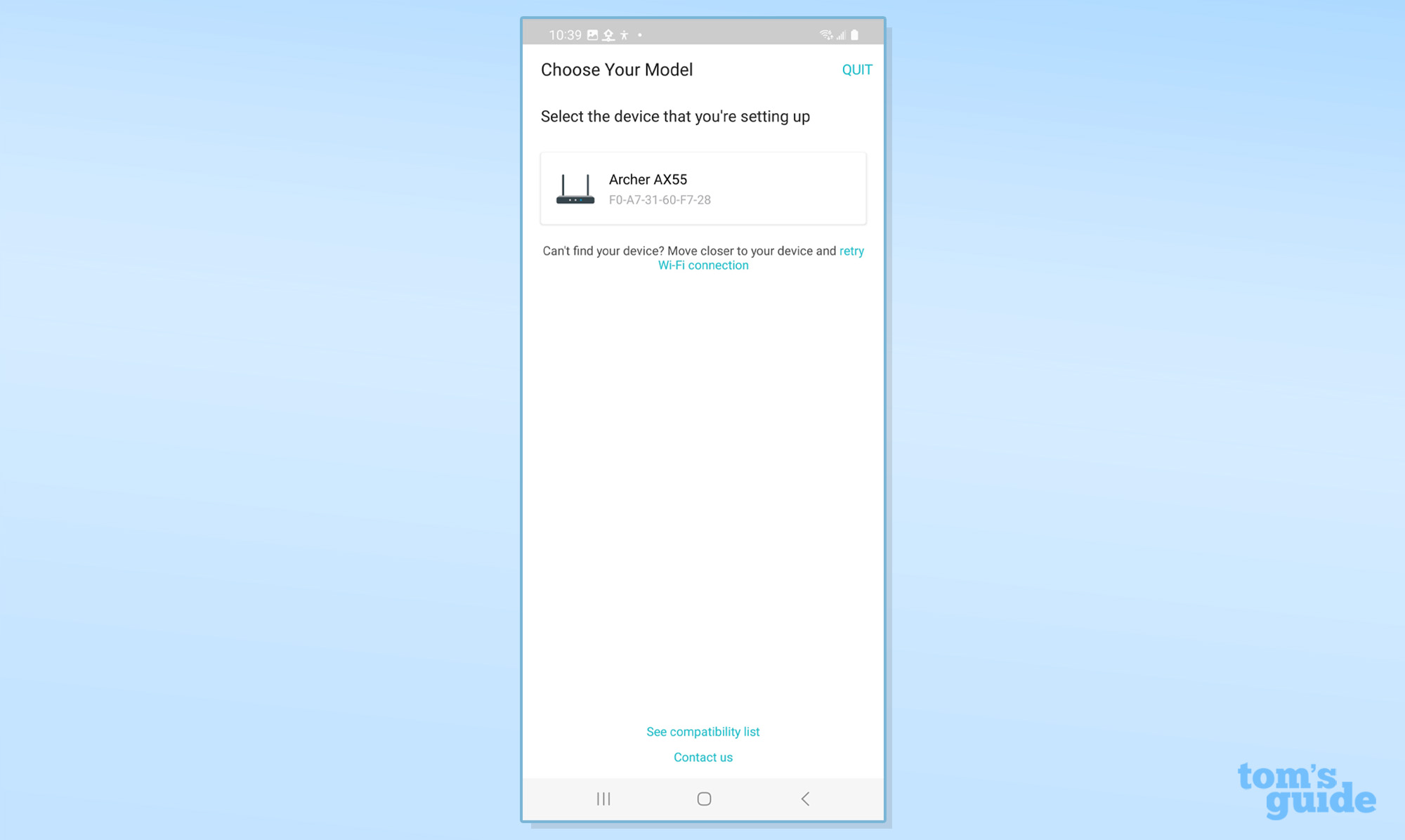
The router finished up with a firmware upgrade. It connected on the first try.
TP-Link Archer AX55 Review: Configuration
Unlike many budget routers, the TP-Link Archer AX55 gives the option of using the Tether app or a connected browser to make it run exactly the way you want it with a variety of configuration changes. Using the app, the Home window is bright and shows a simplified network map as well as how many clients are connected.
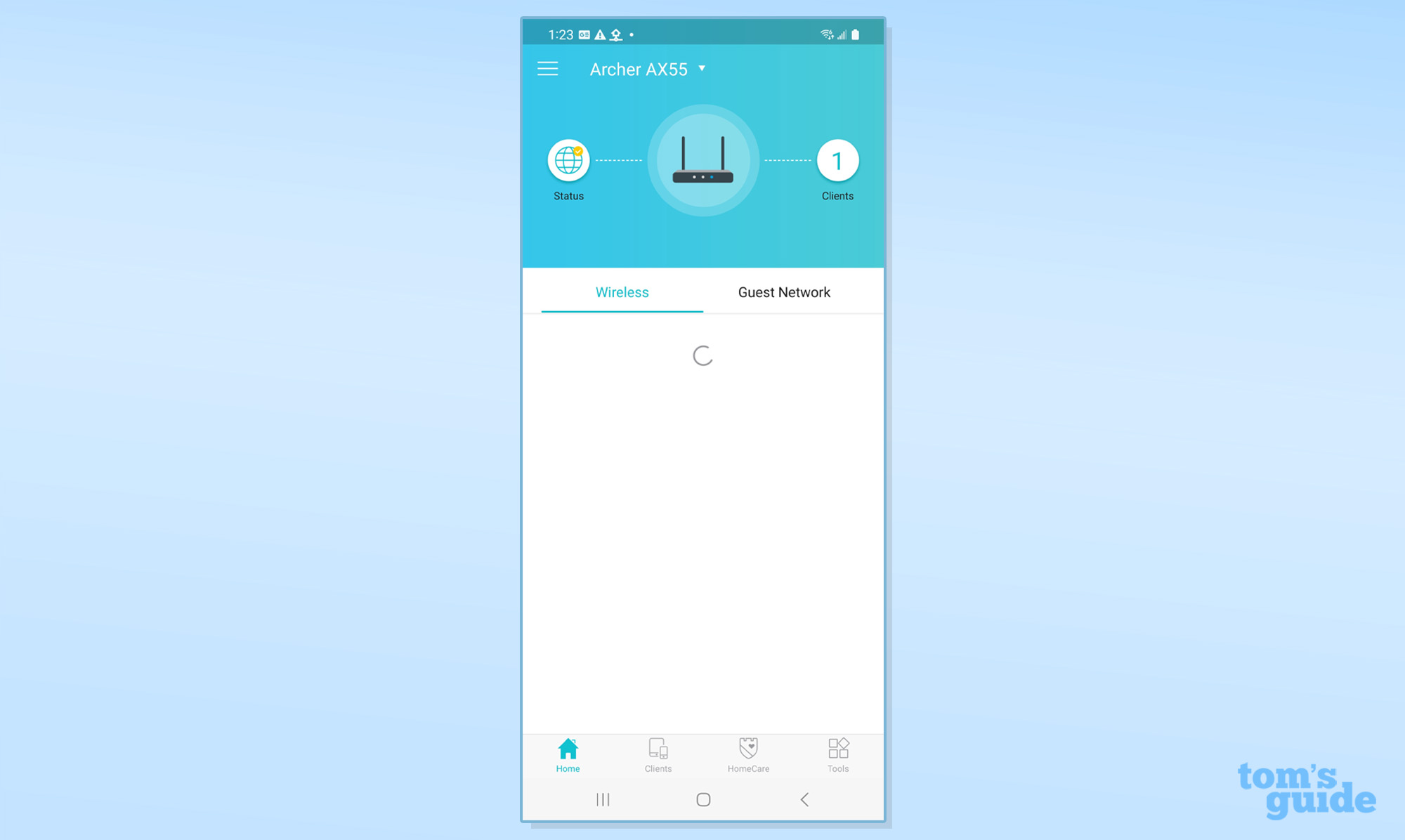
Along the bottom are tabs for Clients (a list of what’s connected with up- and download speeds) and HomeShield (including the router’s extra security). The Tools section is surprisingly deep for an economy router with a way to redo the installation, create a mesh LAN or send someone the login credentials.
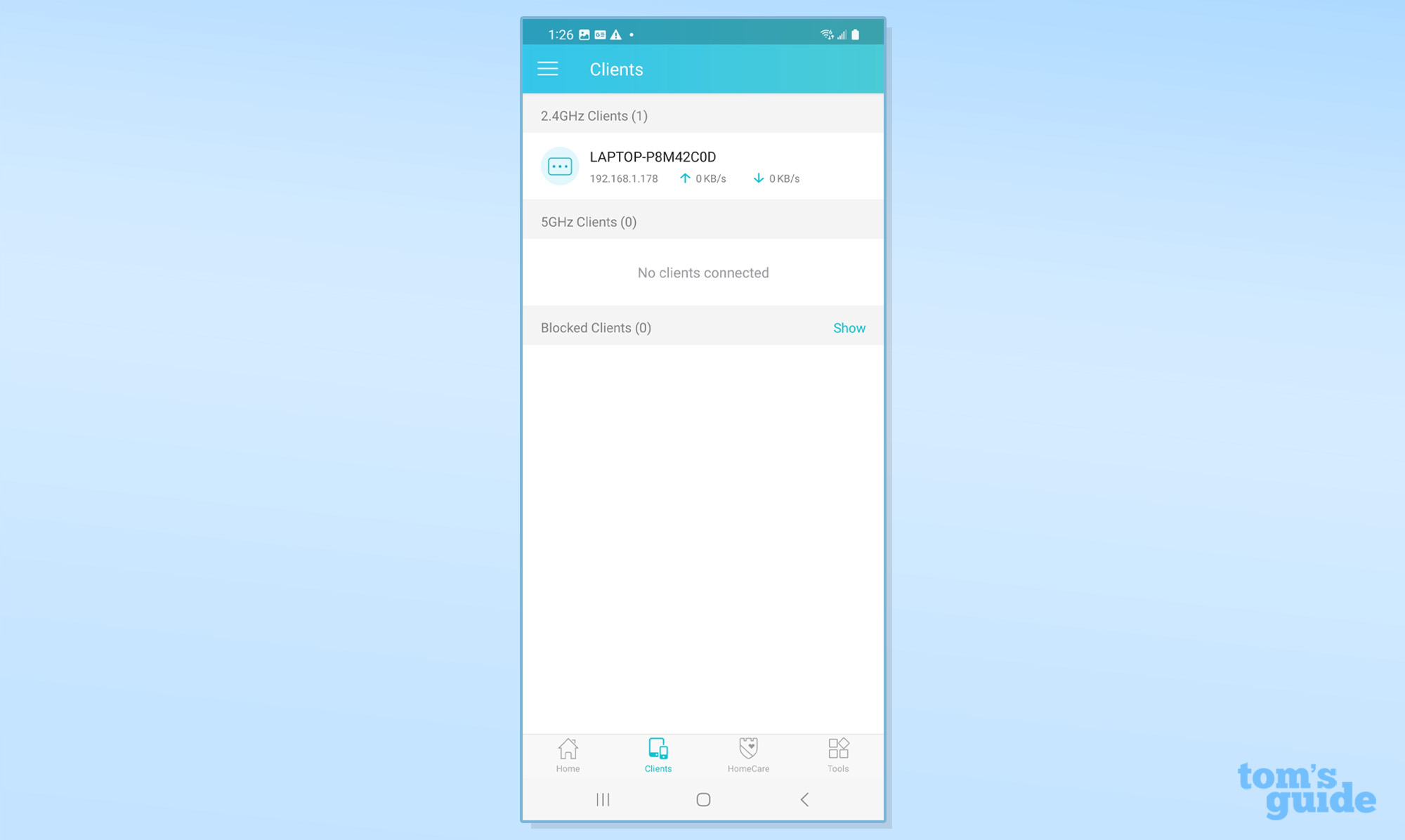
Up top on the left is a three-line hamburger link to see a list of routers, use Alexa or IFTTT commands for home automation scenarios as well as a nice list of typical troubleshooting questions. There’s also a Settings section for seeing what version of TP-Link’s software the AX55 is using.
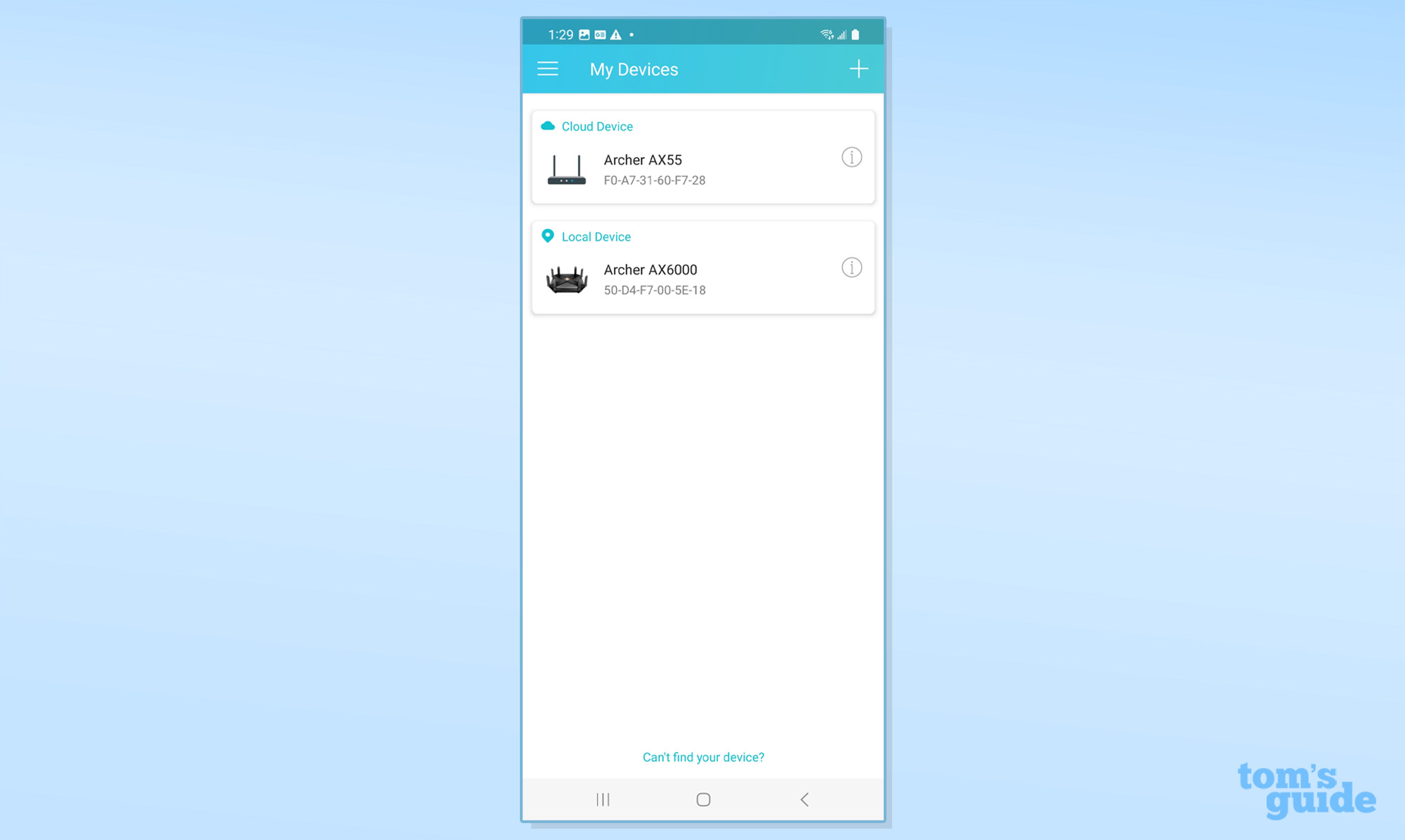
Using a connected browser and the router’s internal interface offers that and a lot more. It’s an either/or situation, without the ability to have two systems connected to the router at once. Still, the main screen shows a network map of connections.
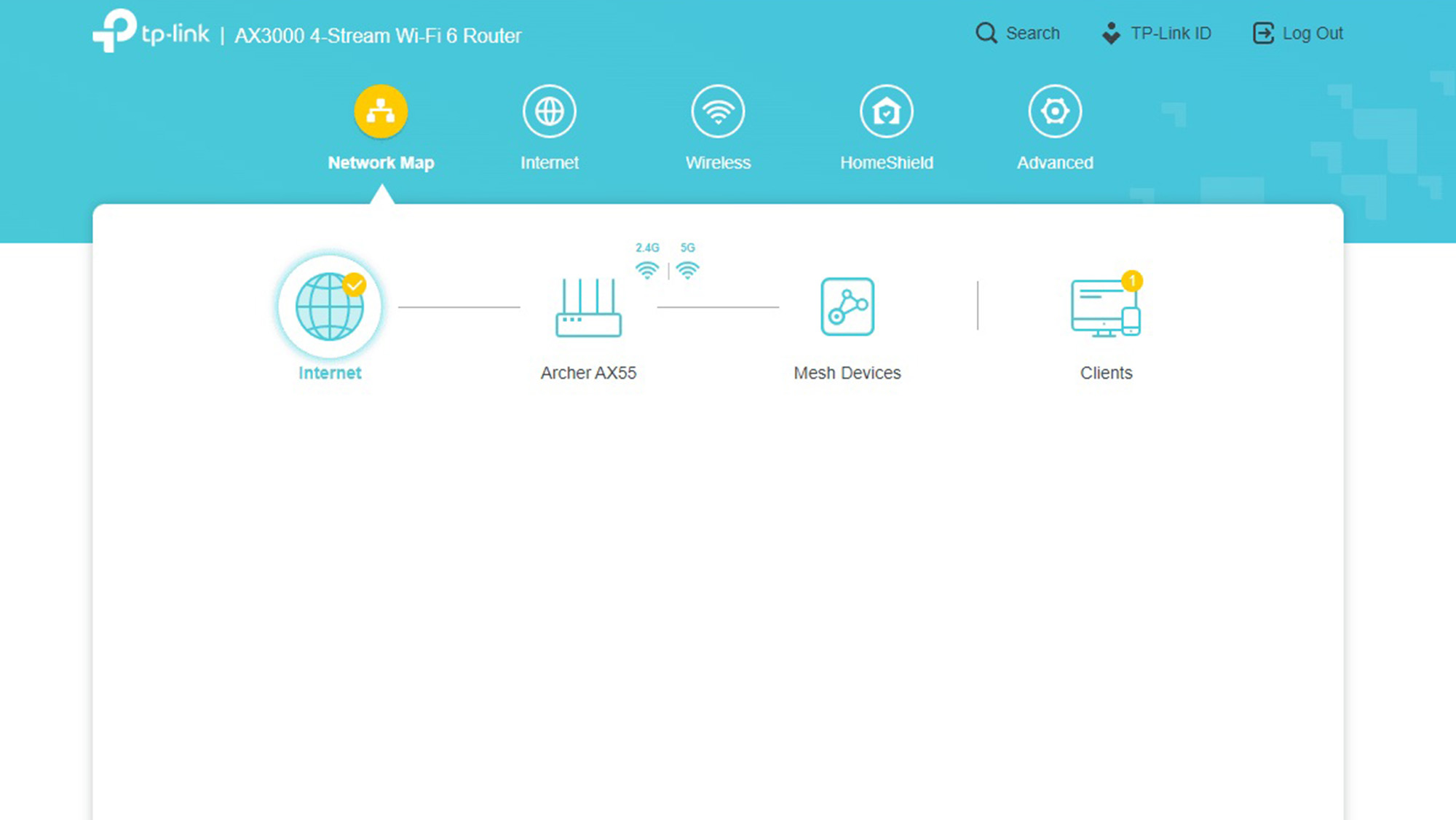
This configuration method adds things like the ability to fine-tune the wireless transmissions, with on/off switches for Orthogonal Frequency Division Multiple Access (OFDMA) and Target Wake Time (TWT).
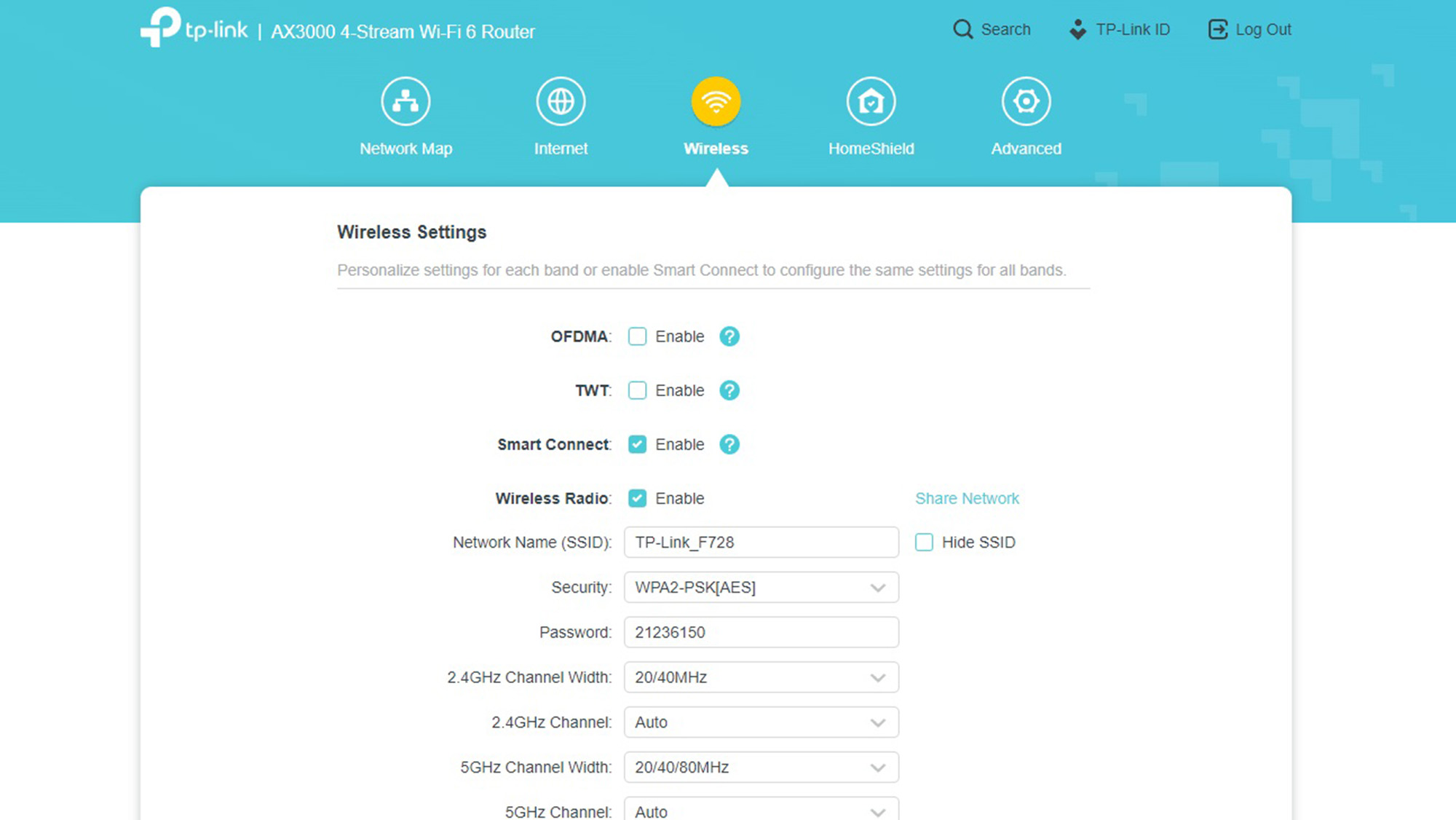
There’s also a security minded section, but the real power behind the Archer AX55 resides in the router’s Advanced category. While many users will ignore this area, it allowed me to do a deep level of optimization that included adjusting the Airtime Fairness, Beacon Interval and RTS Threshold. These are customization options that are usually the first to go in the name of economy.
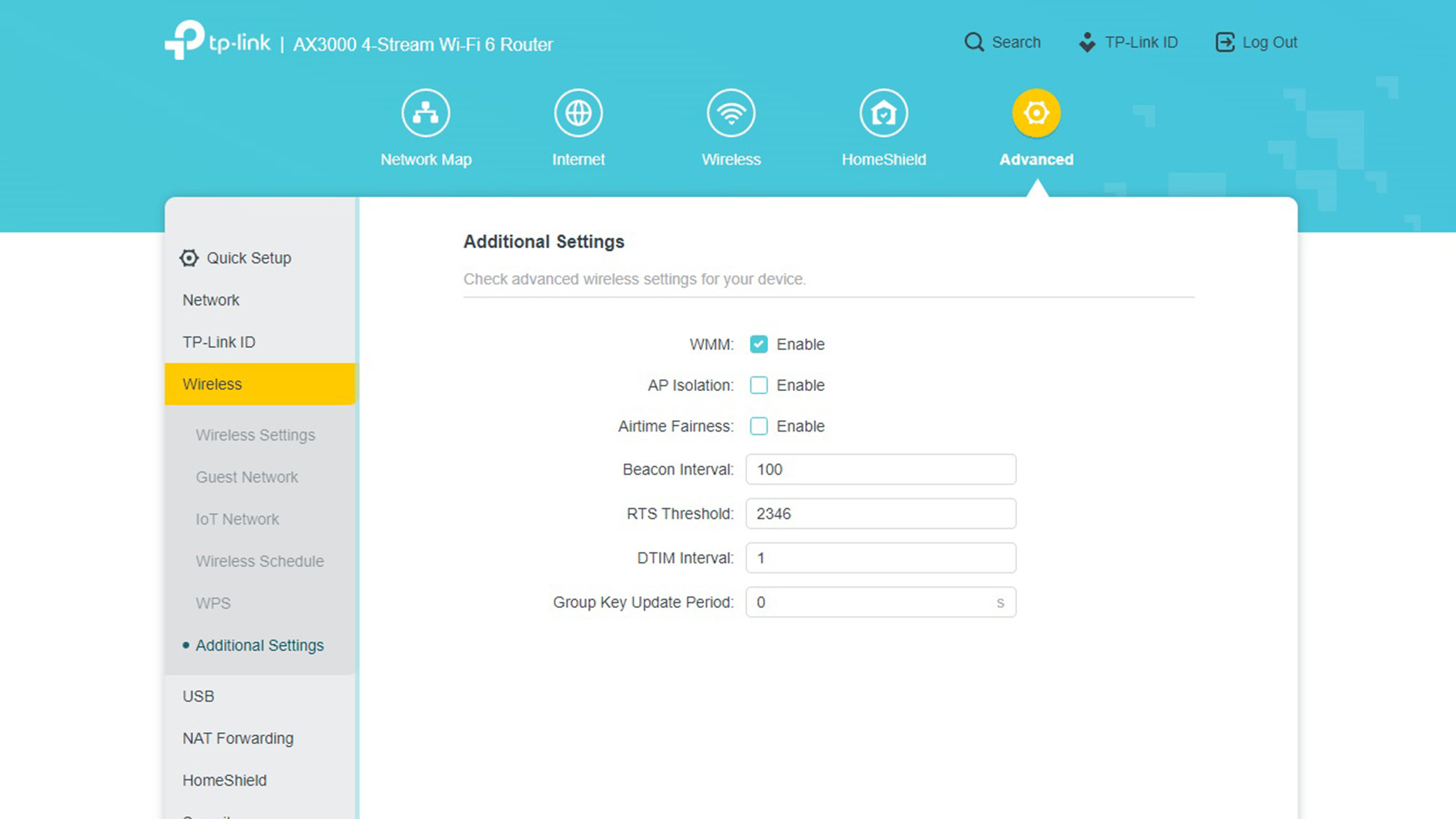
Further down, the USB area is for making the contents of a drive available to all connected clients. After inserting a 1GB flash drive into the router’s back I had the system run a quick scan that found the drive and made its music available across the network.
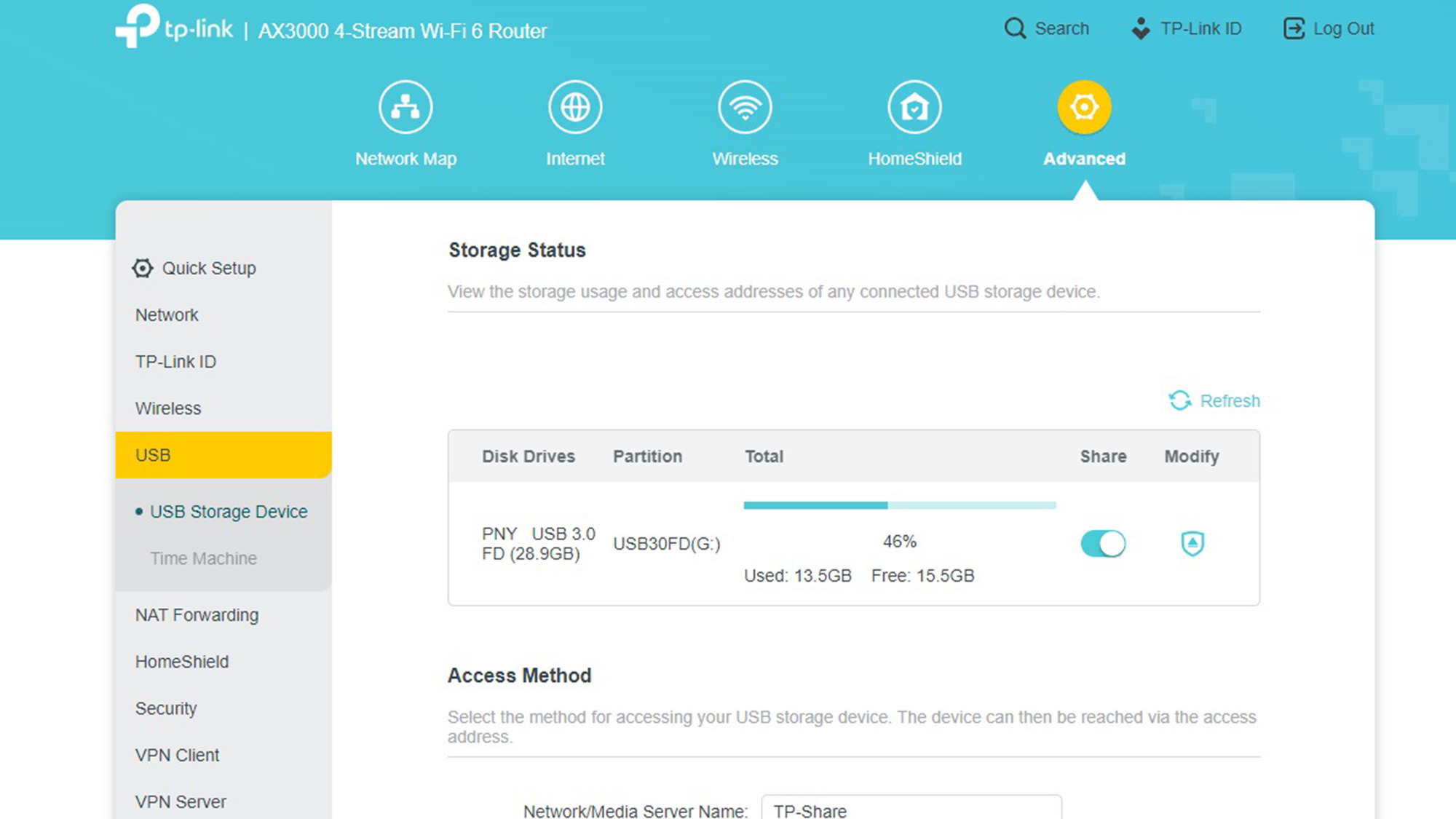
Like the Reyee product, the Archer AX55 includes a two year warranty and support for the life of the product. That’s a world better than Netgear’s one-year of coverage and 90-days of support unless you pony up $100 dollars. This alone makes the Archer AX55 a bargain.
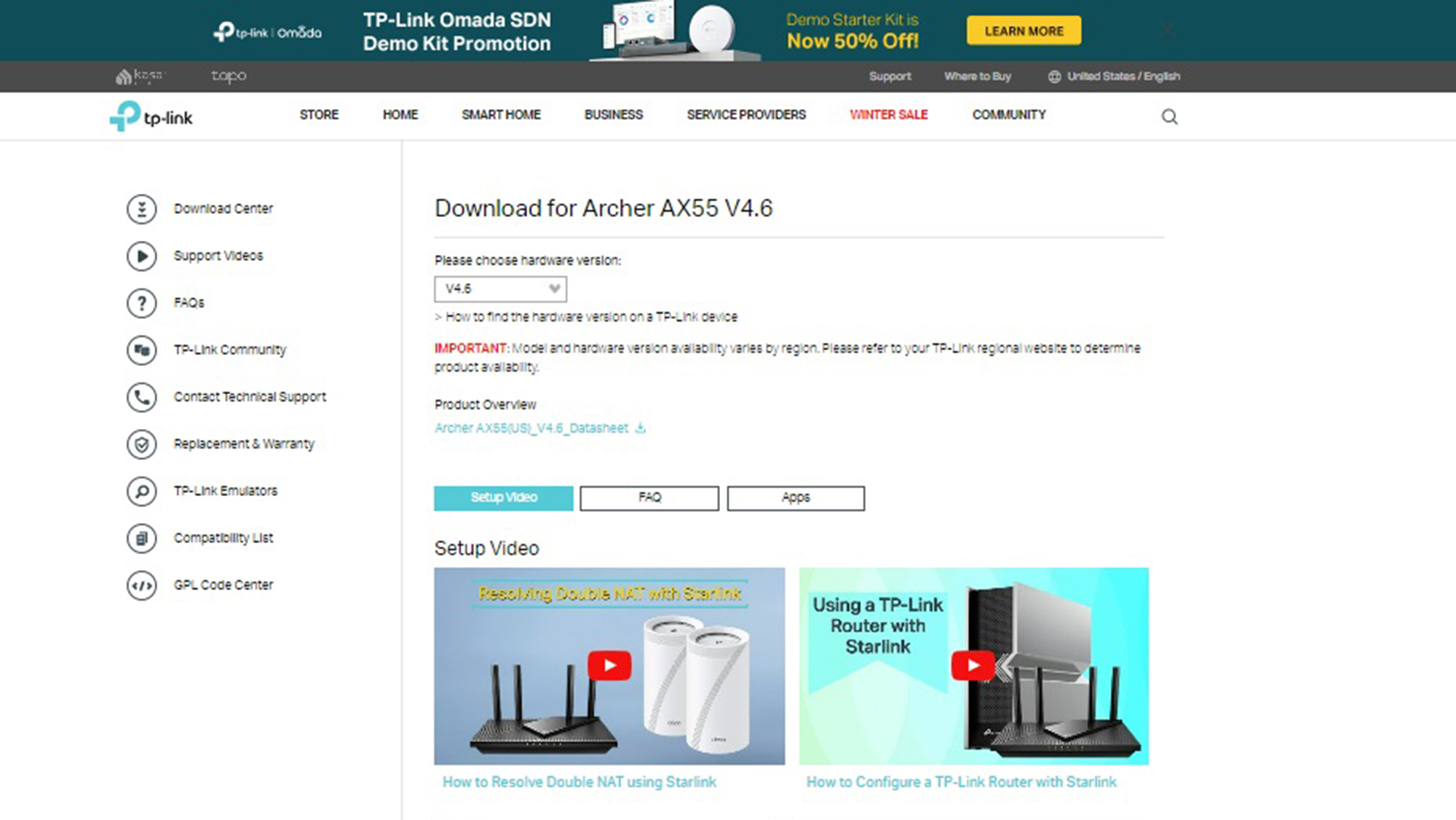
There’s a lot of online help for setting up and getting the most out of the Archer AX55 on TP-Link’s support pages. There are installation and configuration videos as well as access to a thorough manual as well as live or email help.
TP-Link Archer AX55 Review: Verdict
It may not be the fastest Wi-Fi 6 router around, but TP-Link’s Archer AX55 is not only one of the least expensive but is also tiny. Able to deliver more than adequate performance, particularly for those who don’t have gigabit internet. Happily, it has tons of setup options that others forsake in the name of price.
At $110, its price, throughput and two-year warranty are roughly equal to that of the Reyee RG-E5, but the AX55 is the more rounded router of the two (although it is strictly rectangular). It delivers lots of extra customization options, a high-speed USB port for making the contents of a data drive available from one end of the network to the other and the ability to hide the tiny router in plain sight.
The Archer AX55 is a winner for those who don’t need the top performance of Wi-Fi 6E or Wi-Fi 7 but want a well-designed router that will distribute data for years to come.







